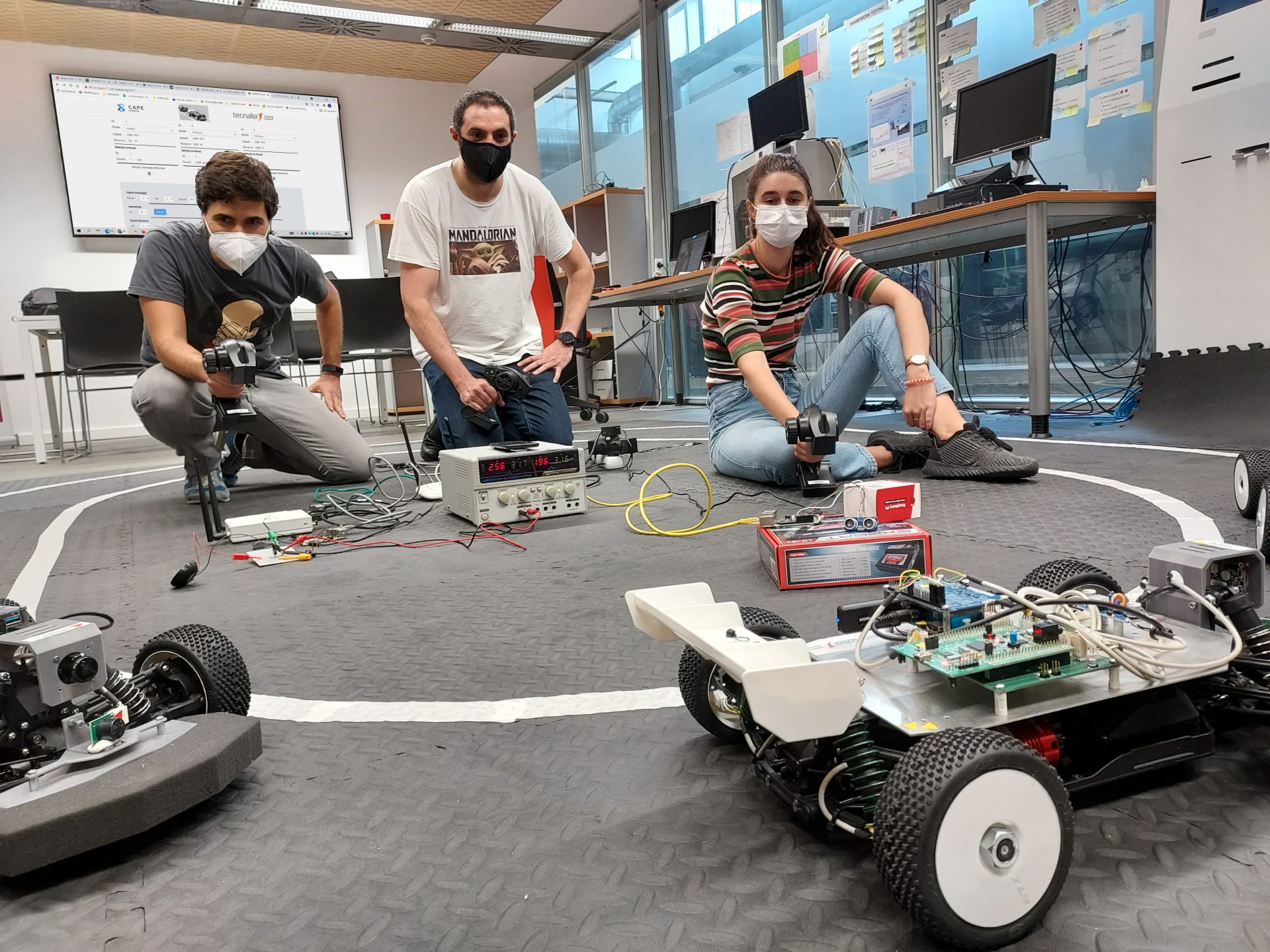EURECAT visited our autonomous vehicle cybersecurity laboratory that forms part of the BDIH Cybersecurity Node.
In the SPARTA initiative TECHNALIA is working on assessing and improving the security of connected vehicles, that drive autonomously in a platoon: a group of vehicles that drive very close together to reduce aerodynamic resistance. This consequently reduces fuel consumption and CO2 emissions.
The EURECAT technological centre visited our autonomous vehicle cybersecurity laboratory. Alongside the TECNALIA team, they ran a penetration test on a fleet of Model Cars driving in a coordinated group, forming a platoon.
Thanks to its CACC (Cooperative Adaptive Cruise Control), each member of the platoon, adapts its speed based on data from its sensors and on information exchanged with the other vehicles. Research has also looked into new countermeasures to deal with cyberattacks on this component.
Aims of the penetration test
The penetration test carried out by EURECAT and TECNALIA focussed on two targets. On the one hand, attacking the WIFI network used by the cars to exchange information, to break inter-vehicle communications and cause collisions between members of the platoon.
On the other hand, attacking the ultrasound sensor that detects obstacles to fool it into detecting non-existent obstacles in the path of the vehicle. The attack causes the vehicle to stop and thereby avoid colliding with the obstacle, also stopping the other members of the platoon.
Further information

